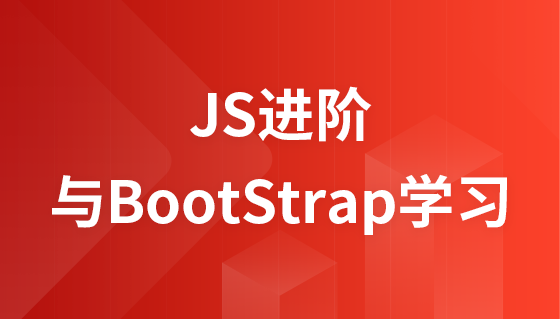
webrtc在手动交换offer/answer信令时,若响应时间超过10-15秒,连接常因ice状态变为'failed'而中断。这主要是因为webrtc的ice(交互式连接建立)机制具有时间敏感性和交互性,长时间的信令延迟会导致ice候选者失效或资源消耗,最终阻碍连接的成功建立。文章将深入探讨其原因并提供最佳实践。
WebRTC(Web Real-Time Communication)技术允许浏览器之间进行实时音视频和数据通信。建立WebRTC连接的核心步骤包括:
RTCPeerConnection 是WebRTC API的核心接口,它管理着整个连接的生命周期,包括信令、ICE收集和连接状态的维护。
在WebRTC的早期开发或特定调试场景中,开发者可能会尝试手动交换Offer/Answer和ICE候选者。然而,这种做法存在固有的风险,尤其是在涉及延迟时:
ICE的交互性与时间敏感性: ICE机制是“交互式”的,意味着它会持续探测并收集可用的网络连接候选者。这些候选者有其生命周期和有效性。当一个对等端生成Offer(包含其部分ICE候选者)并发送给另一个对等端后,它会期望在合理的时间内收到Answer,以及后续的ICE候选者。如果Answer或ICE候选者的交换被长时间延迟(例如超过10-15秒),则:
iceCandidatePoolSize 的影响: iceCandidatePoolSize 配置项允许 RTCPeerConnection 在 setLocalDescription 之前预先收集指定数量的ICE候选者。虽然这在某些情况下可以略微加速连接建立,但设置过大的值(如100)通常是浪费资源的,并且在手动延迟交换信令的场景下,这些预先收集的候选者更有可能在被使用之前就失效。在大多数现代应用中,如果 ICE 候选者能通过 onicecandidate 事件及时交换,这个值通常可以设为0或使用默认值。
原始问题中描述的现象——“如果创建的Answer未在10秒内被接受,iceConnectionState 属性返回 'failed'”——正是上述时间敏感性和交互性导致的典型结果。手动、延迟的信令交换与WebRTC的实时性要求相悖。
为了确保WebRTC连接的稳定和高效建立,应遵循以下最佳实践:
使用信令服务器进行自动化交换: WebRTC本身不提供信令机制。通常,应用程序会部署一个信令服务器(例如,基于WebSocket、Socket.IO、MQTT等)来实时、自动化地交换SDP Offer/Answer和ICE候选者。信令服务器负责:
及时交换SDP:
实时交换ICE候选者: 这是最关键的一点。RTCPeerConnection 会在后台持续收集ICE候选者。每当收集到一个新的候选者时,它会触发 onicecandidate 事件。
以下代码示例展示了如何正确地监听和交换ICE候选者,这通常是与信令服务器配合使用的:
export default class P2PConnectionManager {
constructor(signalingChannel) {
this.peerConnection;
this.dataChannel;
this.signalingChannel = signalingChannel; // 假设这是一个WebSocket或类似的信令通道
this.configuration = {
iceServers: [
{ urls: ['stun:stun4.l.google.com:19302'] }
],
// iceCandidatePoolSize 通常不需要设置过大,甚至可以省略,
// 因为我们通过onicecandidate事件实时交换。
// iceCandidatePoolSize: 0
};
}
async createPeerConnection() {
this.peerConnection = new RTCPeerConnection(this.configuration);
// 1. 监听ICE候选者事件,并立即通过信令服务器发送
this.peerConnection.onicecandidate = (event) => {
if (event.candidate) {
console.log('本地ICE候选者生成并发送:', event.candidate);
// 通过信令服务器将候选者发送给远端
this.signalingChannel.send({ type: 'iceCandidate', candidate: event.candidate });
} else {
console.log('ICE候选者收集完成');
// 可选:当ICE候选者收集完成后,可以发送一个信号
// this.signalingChannel.send({ type: 'iceGatheringComplete' });
}
};
// 2. 监听连接状态变化,用于调试和UI更新
this.peerConnection.onconnectionstatechange = () => {
console.log('PeerConnection 状态:', this.peerConnection.connectionState);
};
this.peerConnection.oniceconnectionstatechange = () => {
console.log('ICE 连接状态:', this.peerConnection.iceConnectionState);
};
this.peerConnection.onicegatheringstatechange = () => {
console.log('ICE 收集状态:', this.peerConnection.iceGatheringState);
};
// 3. 监听数据通道事件 (如果是接收方)
this.peerConnection.ondatachannel = (event) => {
console.log('接收到远程数据通道:', event.channel.label);
this.dataChannel = event.channel;
this.dataChannel.onopen = () => console.log('数据通道已打开');
this.dataChannel.onmessage = (msgEvent) => console.log('收到数据通道消息:', msgEvent.data);
this.dataChannel.onclose = () => console.log('数据通道已关闭');
};
}
// 创建Offer方
async createOffer() {
await this.createPeerConnection();
this.dataChannel = this.peerConnection.createDataChannel('test-channel'); // 创建数据通道
this.dataChannel.onopen = () => console.log('本地数据通道已打开');
this.dataChannel.onmessage = (event) => console.log('收到数据通道消息:', event.data);
const offer = await this.peerConnection.createOffer();
await this.peerConnection.setLocalDescription(offer);
console.log('创建并设置本地Offer:', offer);
// 通过信令服务器发送Offer
this.signalingChannel.send({ type: 'offer', sdp: offer });
return offer;
}
// 接收Offer方
async handleOffer(remoteOffer) {
await this.createPeerConnection();
await this.peerConnection.setRemoteDescription(new RTCSessionDescription(remoteOffer));
console.log('设置远程Offer:', remoteOffer);
const answer = await this.peerConnection.createAnswer();
await this.peerConnection.setLocalDescription(answer);
console.log('创建并设置本地Answer:', answer);
// 通过信令服务器发送Answer
this.signalingChannel.send({ type: 'answer', sdp: answer });
return answer;
}
// 接收Answer方
async handleAnswer(remoteAnswer) {
// 只有当本地描述已设置,且远程描述尚未设置时才设置远程Answer
if (this.peerConnection.currentLocalDescription && !this.peerConnection.currentRemoteDescription) {
await this.peerConnection.setRemoteDescription(new RTCSessionDescription(remoteAnswer));
console.log('设置远程Answer:', remoteAnswer);
} else {
console.warn('远程Answer已设置或本地描述未准备好,忽略此Answer。');
}
}
// 处理接收到的远程ICE候选者
async handleIceCandidate(candidate) {
try {
if (this.peerConnection && candidate) {
await this.peerConnection.addIceCandidate(new RTCIceCandidate(candidate));
console.log('添加远程ICE候选者:', candidate);
}
} catch (e) {
console.error('添加ICE候选者失败:', e);
}
}
}
// 实际应用中,'signalingChannel' 会是一个真实的通信实例,例如:
// const ws = new WebSocket('ws://your-signaling-server.com');
// ws.onmessage = async (event) => {
// const message = JSON.parse(event.data);
// if (message.type === 'offer') {
// await p2pManager.handleOffer(message.sdp);
// } else if (message.type === 'answer') {
// await p2pManager.handleAnswer(message.sdp);
// } else if (message.type === 'iceCandidate') {
// await p2pManager.handleIceCandidate(message.candidate);
// }
// };
// const p2pManager = new P2PConnectionManager(ws);以上就是WebRTC连接建立超时问题解析:手动信令交换与ICE机制的挑战的详细内容,更多请关注php中文网其它相关文章!

每个人都需要一台速度更快、更稳定的 PC。随着时间的推移,垃圾文件、旧注册表数据和不必要的后台进程会占用资源并降低性能。幸运的是,许多工具可以让 Windows 保持平稳运行。




Copyright 2014-2025 https://www.php.cn/ All Rights Reserved | php.cn | 湘ICP备2023035733号